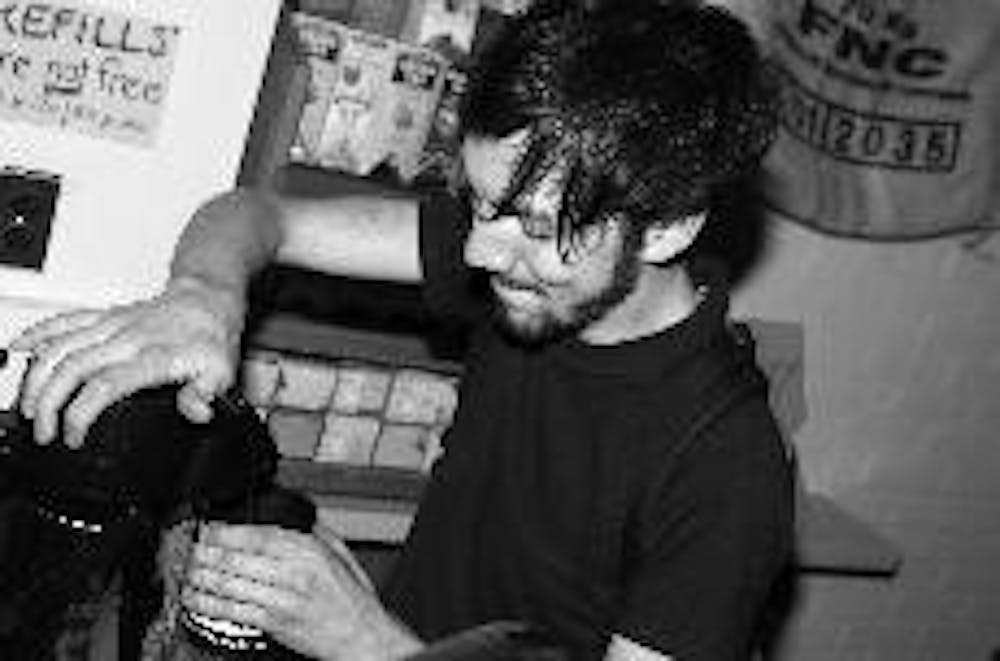Hillary Tolson, a junior in the College of Arts and Sciences, follows a strict routine: two cups of coffee every day, always a regular and a latte. And she'll only get them from two places: Einstein Bros. Bagels on campus or a nearby Starbucks. Surely there's a science to her choosiness.
"The cups look nice," she says. "At Davenport [Lounge, on campus] they have that plain white Styrofoam. You don't want that."
Young adults like Tolson are the fastest-growing segment of coffee drinkers in the country - they come for the caffeine and stay for the cool factor - or vice-versa. Coffee consumption in the 18- to 24-year-old age group is expanding like none other, jumping by more than 18 percent in 2005, according to a National Coffee Association survey.
This trend is clear on the AU campus, where students now can choose coffee from nine locations, including the recent addition of fair trade establishment Pura Vida, along with four Starbucks stores within walking distance.
Coffee has made a resurgence overall in the last decade after struggling for much of the latter half of the 20th century. According to author Mark Pendergrast, who wrote a book chronicling the history of coffee, it was relegated to "housewives and harried businessmen" in the 1950s, when soda became popular with everyone else. Its comeback came in the 1990s when a new generation of coffeehouses, with their inviting couches and diverse menus, sprung up across the country. Just as they were in London and Vienna of the 17th century, coffeehouses reign once again as social hot spots.
They also answer the needs of college students. As students take on new workloads and social demands, they want ways to stay awake and places to hang out.
"For the last 10 years, it's been gathering in popularity," Pendergrast says. "You don't need to get drunk to have a good time socially. It's a good place to gather. It's a very positive thing that coffee is popular. It's a way to study in a pleasant environment."
That's obvious at AU. Students can connect to the Internet or curl up on the L-shaped couch at the sleek-looking Megabytes Cafe. At the student-run Davenport Lounge in the School of International Service building, people play chess amidst bookshelves lined with old copies of National Geographic and the latest issues of The Economist. There's even a coffee place in the library basement- "The Mud Box"- where students can indulge in macchiatos, croissants and reserve readings.
Students recognize what they're latching on to: If it's from the right place, coffee can be cool.
"When I have coffee, I want to enjoy it," says junior Cyril Ngoua, holding a macchiato at Megabytes Cafe. "McDonald's, 7-Eleven- don't touch that stuff, man."
"I started for the caffeine, but now it's about status," says CAS junior Lauren Schuitema, sipping coffee with her laptop open at a Starbucks near campus. "If you just have a cup of McDonald's coffee, they'll wonder what's up."
Students are looking for a quality cup of coffee in an appealing package. The NCA's report backs this up. The most popular choices among the college-age crowd are specialty concoctions, such as iced and espresso drinks.
But for Tolson, it's more than just what's in her cup, emblazoned with the green mermaid stamp of Starbucks approval, of course. Who cares about the beverage when there's the ambiance of the coffeehouse?
"Oh my God, the music," she says of the Starbucks experience. "That's a whole part of being here. I feel so sophisticated. It's that jazzy music."
"It's bourgeois," Schuitema says.
Sophisticated, yes, but bourgeois, maybe not. After all, coffeehouses have long been centers of dissent and revolution. Pendergrast points out that they were banned in 16th century Mecca, England's Charles II issued a proclamation against them a hundred years later, and in the 1960s, the U.S Army campaigned against coffeehouses for supposedly fomenting anti-Vietnam War activities.
Controversy, coffeehouses and college seem to go hand in hand. The Davenport Lounge is especially fit for the role. The dimly lit corner in the same building where classes discuss the European Union and the Iraq insurgency seems designed to provoke thought. There's literature on current affairs, Oregon Chai ("It's Vegantastic!!!" reads a handmade sign) and big sofas, which are always occupied with people sipping fair-trade brews.
"This is just an open forum where people come to discuss politics and classes," says senior Corinne St. Angelo, who has worked at Davenport for three years. "There are couches and magazines. We get students and professors here."
But the same drink that spread waves of fear among European monarchs is now spreading concern among scientists because of caffeine's impact on health.
Coffee doesn't have to be bad, but it does have to be consumed responsibly, says AU psychology professor Laura Juliano. She co-authored a study on caffeine dependence and found that all it takes to get hooked on the stuff is 100 milligrams a day - the amount contained in a regular cup of coffee. Dependence means that quitting involves such withdrawal symptoms as headaches and irritability. The drug also loses potency the more it is consumed, requiring increasingly stronger concoctions. At that point it's needed not just to stay awake but to feel well.
"If you rarely use caffeine, it can be quite a remarkable drug," Juliano said. "Say if you didn't get enough sleep or you had a long drive- that's when it does its best work. It becomes a problem when you use it all the time. You'll be worse off than if you never had it all."
Juliano is familiar with students coming to her morning lectures with coffee in hand. But the most she can do is give words of caution.
"I'm not going to pass judgment," she said. "I've probably got a cup in class sometimes"





